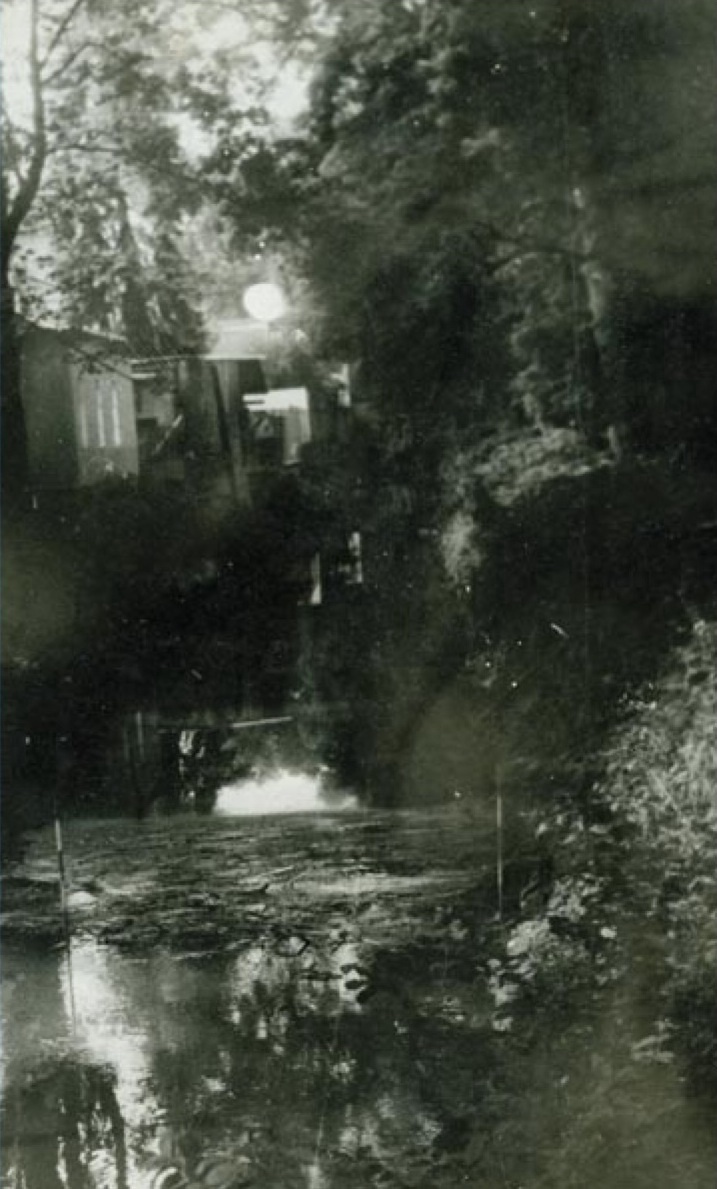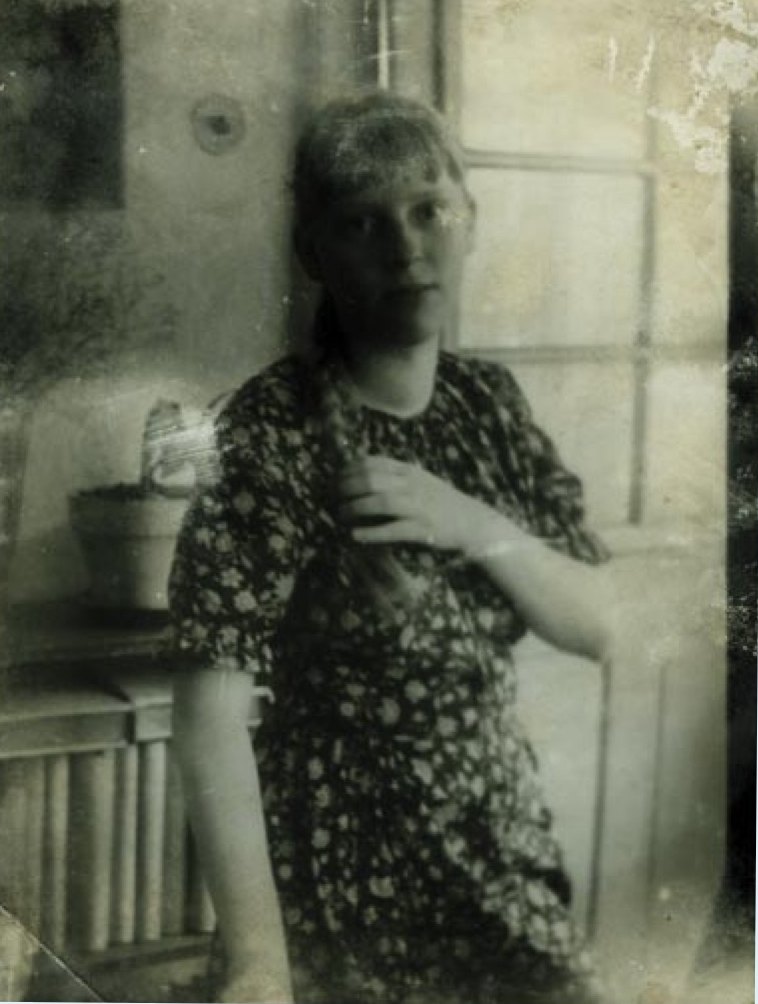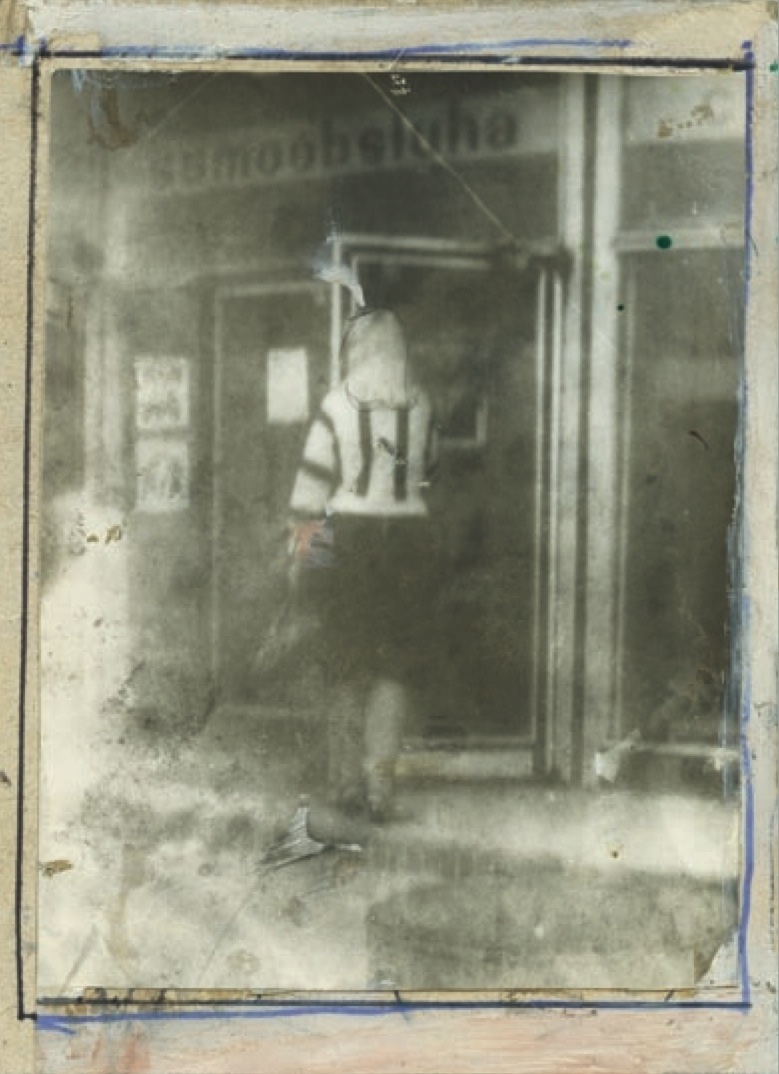This article was one of the finalists in Circa’s critical-writing competition for undergraduates in Ireland; more information here.

It is difficult to talk about Tichý’s work without first telling the story which is attached to him. The free catalogue and introduction to the exhibition in the Douglas Hyde inform us of Tichý’s internment by the police of communist Czechoslovakia and his mental illness. Released from prison, Tichý took up an interest in photography, vowing to take 100 photographs a day. His photos are captured images of young girls and women in his hometown of Kyjov.
Tichý’s exhibitions are organized by the Tichý Oceán Foundation with the ambiguous consent of the artist. The organization was founded by Roman Buxbaum, a neighbour of the artist who has collected Tichý’s photographs, received as gifts or sometimes rescued from destruction. Tichý forgoes any involvement in how his artworks are displayed and so his personal history and lifestyle are displayed alongside his work instead as context. As with outsider artists, his life becomes indistinguishable from his artistic methods.

Buxbaum’s filmed interview with Tichý, Tarzan retired, is a vital accompaniment to the exhibition given this situation, as the film reveals the artistic motivation behind the works. In this film, we can see the importance the philosopher Arthur Schopenhauer has in Tichý’s modus operandi. Tichý cites Schopenhauer’s book The World as will and representation as an important influence. “The world is nothing but an appearance, an illusion…and it happens so fast that you might not see anything at all… What you need is a bad camera" (Tichý, 2004, in Tarzan retired, Roman Buxbaum).
The organ of this illusion Tichý refers to is the site of our perception – the eye. Sight confirms our assumed position of autonomy; separate from the rest of the universe. To create his own perspective, Tichý must build his own camera (eye). Included in the exhibition are fascinating examples of cameras he has made and used, constructed from toilet rolls, bottle caps and elastic bands. “The flaws are a part of it, that’s the poetry." For Tichý, the paradox of perception is best communicated through its tangible analogue quality. Hence the homemade cameras, devices that capture the moment but register it in a genuinely flawed way. In the process, the works emphasise the indexical characteristics of photography. Tichý’s images have not been professionally processed; they appear to us as shadowy templates, casts of light or of time, baring their edges. Their presence flickers on the paper scraps, cut from various banal objects and surfaces, which Tichý coats in photographic chemicals.

Tichý’s photos are primarily of women and of children, particularly young girls. The photos often place the viewer in the position of a foreign observer, intruding on hidden moments of intimacy. One feels as though one is invading the lives and childhood of these young girls, and peeping in on shadowy suggestive forms of lovers amidst trees. This feeling is reinforced by the appearance of wire fences in several of his photos.
Tichý’s obsession with young girls reminds one of the Deleuzian idea of ‘becoming-girl’:
This body is stolen first from the girl: Stop behaving like that, you’re not a little girl anymore, you’re not a tomboy, etc. The girl’s becoming is stolen first, in order to impose a history, or prehistory upon her. The boy’s turn comes next, but it is by using the girl as an example, by pointing to the girl as the object of his desire, that an opposed organism, a dominant history is fabricated for him too. The girl is the first victim, but she must also serve as an example and a trap. (Gilles Deleuze and Félix Guattari, A Thousand plateaus, 2004, p 308)
The girl’s ambiguous latent and denied sexual identity confer a sense of fragility – something unbound which is lost in the socialization of crude gender definitions.
These photos are stolen moments of ephemeral time, snatched from their precarious existence and preserved in collections and exhibitions to serve in the creation of Tichý’s eccentric myth, cultivated as bankable art-world capital. The predicament of Tichý’s noninvolvement in the displaying of his work in the gallery means that any innovative curatorship is made very difficult. The photos which are heaped on Tichý’s floor are now separated and framed on the walls of the white cube space and the gallery falls back on its historical incarnation as museum.
Paul Maguire is in his final year of college, studying Fine Art Painting and History of Art in NCAD.